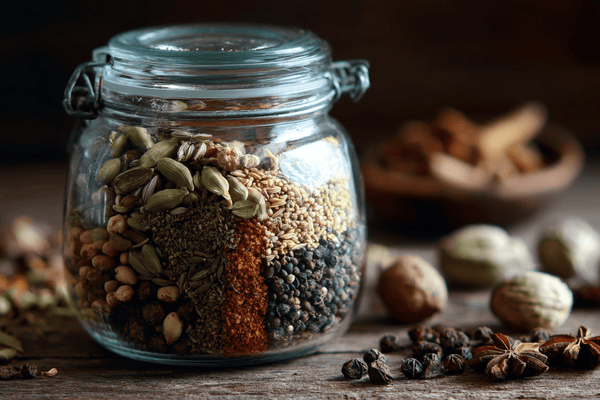
Welcome to our article on "All About 14C28N Steel," the super steel that's taking the knife and tool industry by storm! In this article, we'll be diving into the nitty-gritty details of this amazing steel, but don't worry, it won't be boring.
We promise! We'll talk about the composition and properties of 14C28N steel, the manufacturing process, and quality control measures, the advantages of 14C28N steel over other types of steel, and how it compares to other popular knife steels such as S30V and VG-10.
Plus, we'll also be discussing the heat treatment and sharpening techniques for 14C28N steel knives, the history and development of 14C28N steel, and the impact of 14C28N steel on the knife and tool industry. So, sit back, relax, and get ready to learn all about 14C28N steel in a fun and entertaining way!
The composition and properties of 14C28N steel
the composition and properties of 14C28N steel are important factors to consider when discussing this type of steel. 14C28N steel is a high-performance stainless steel that is commonly used in the knife and tool industry. It is a nitrogen-enhanced steel, which means that it contains a higher amount of nitrogen than traditional stainless steels. This increased nitrogen content improves the steel's hardness, corrosion resistance, and edge retention.
The exact composition of 14C28N steel can vary depending on the manufacturer, but it generally contains:
- 14% Chromium: Provides corrosion resistance and hardness
- 0.6% Carbon: Increases hardness and wear resistance
- 0.3% Nitrogen: Improves hardness and corrosion resistance
- 0.3% Manganese: Improves hardenability and wear resistance
- 0.2% Silicon: Improves hardenability
- 0.1% Phosphorus: Improves machinability
- 0.1% Sulfur: Improves machinability
The steel is known for its excellent edge retention, hardness, and corrosion resistance. It is also relatively easy to sharpen and maintain. It is a good steel for everyday use and can be used for a variety of tasks, such as hunting, fishing, and camping.
Advantages of 14C28N steel over other types of steel
The manufacturing process and quality control measures for 14C28N steel are important aspects to consider when discussing this type of steel.
14C28N steel is typically made through a process called powder metallurgy, which involves blending together powders of the various alloying elements (chromium, carbon, nitrogen, manganese, silicon, phosphorus, and sulfur) in the desired proportions. These powders are then compacted under high pressure and heated to form a solid bar of steel. This process allows for a high degree of precision in the steel's composition, which is important for achieving the desired properties of the steel.
Once the steel has been formed, it goes through a series of heat treatments to achieve the desired hardness and toughness. The steel is then cooled and ground to the desired shape and size.
Quality control measures are put in place to ensure that the steel meets the desired specifications and properties. This can include testing the steel's hardness, toughness, and corrosion resistance, as well as conducting metallographic examinations to ensure that the steel's microstructure is consistent with the desired properties.
It's worth mentioning that some manufacturers may use other methods to produce 14C28N steel, such as ingot casting, but powder metallurgy is the most common method.
The advantages of 14C28N steel over other types of steel
One of the main advantages of 14C28N steel is its excellent edge retention. The nitrogen in the steel improves the steel's hardness, which allows the edge to stay sharper for longer. This makes it a great choice for knives that will be used for tasks that require a sharp edge, such as cutting or slicing.
Another advantage of 14C28N steel is its corrosion resistance. The high chromium content in the steel provides good resistance to rust and other forms of corrosion, which makes it a good choice for knives that will be used in outdoor or damp environments.
14C28N steel also has a good balance of hardness and toughness, which makes it relatively easy to sharpen and maintain. This balance also allows the steel to withstand heavy use without becoming brittle or prone to chipping.
Additionally, 14C28N steel is relatively affordable compared to some other high-performance knife steels, which can make it a more cost-effective choice for knife manufacturers and consumers.
Common applications of 14C28N steel
One of the most popular uses of 14C28N steel is in the production of high-performance knives, such as hunting knives, folding knives, and chef knives. The steel's excellent edge retention, corrosion resistance, and balance of hardness and toughness make it a great choice for knives that will be used for a variety of tasks, such as cutting, slicing, and chopping.
14C28N steel is also commonly used in the production of tools such as scissors, hand tools, and other cutting instruments. Its ability to hold an edge and resist corrosion make it a perfect steel for these applications.
14C28N steel is also used in other industries such as medical and aerospace because of its high corrosion resistance and high-temperature resistance.
Comparison of 14C28N steel to other popular knife steels such as S30V and VG-10
S30V steel is another high-performance steel that is commonly used in the knife industry. It is known for its excellent edge retention, corrosion resistance, and toughness. However, it is generally considered to be more difficult to sharpen than 14C28N steel. S30V steel also tends to be more expensive than 14C28N steel.
VG-10 steel is another high-performance steel that is commonly used in the knife industry. It is known for its excellent edge retention and corrosion resistance. VG-10 steel is also relatively easy to sharpen and maintain, similar to 14C28N steel. However, VG-10 steel is generally considered to be less tough than 14C28N steel and may be more prone to chipping under heavy use.
14C28N steel is similar to S30V and VG-10 steel in terms of its excellent edge retention and corrosion resistance. However, 14C28N steel is generally considered to be easier to sharpen and maintain than S30V steel and to be more tough than VG-10 steel.
Additionally, 14C28N steel tends to be more affordable than S30V steel. Each of these steels has its own unique properties, and the best choice will depend on the specific application and the user's preference.
The heat treatment and sharpening techniques for 14C28N steel
14C28N steel is typically heat treated to a hardness of around 60-62 on the Rockwell scale (HRC). This allows the steel to achieve a balance of hardness and toughness that is ideal for knives. In order to achieve this hardness, the steel is heated to a high temperature and then cooled rapidly, a process known as quenching.
Sharpening 14C28N steel knives is relatively easy and straightforward. The steel is relatively soft, which makes it easy to sharpen with a variety of sharpeners, such as a honing rod, a sharpening stone, or a powered sharpener. It's important to note that due to its high corrosion resistance, 14C28N steel can be prone to smearing, so it's important to use a honing rod or diamond plate to remove this.
A common sharpening technique for 14C28N steel knives is the use of a honing rod with a fine grit. This will help to maintain the edge of the knife and can be done regularly to keep the edge in good condition.
Another sharpening technique is using a sharpening stone with a medium grit to sharpen the edge. A good practice is to start with a coarse grit and then move to a finer grit to achieve a razor-sharp edge.
The history and development of 14C28N steel
14C28N steel was developed by the Swedish company Sandvik Steel in the early 2000s. The company was looking to create a high-performance steel that would be suitable for use in knives and other cutting tools. The steel was developed through a process called powder metallurgy, which allows for a high degree of precision in the steel's composition.
The steel was first introduced to the market in 2008 and quickly gained popularity among knife manufacturers and users. The steel's combination of excellent edge retention, corrosion resistance, and good balance of hardness and toughness made it a popular choice for high-performance knives.
In recent years, 14C28N steel has become one of the most popular high-performance knife steels in the market, and is widely used by many knife manufacturers around the world. Many knives makers and manufacturers have adopted 14C28N steel as their go-to steel for their knives and tools.
The impact of 14C28N steel on the knife and tool industry
Since its introduction to the market in 2008, 14C28N steel has had a significant impact on the knife and tool industry. The steel's combination of excellent edge retention, corrosion resistance, and good balance of hardness and toughness have made it a popular choice for high-performance knives and tools. This has led to an increase in the number of knives and tools made with 14C28N steel.
The popularity of 14C28N steel has also led to increased competition among knife and tool manufacturers, as they strive to produce knives and tools with this steel that will stand out from the competition. This has led to a rise in innovation and creativity in the knife and tool industry, as manufacturers experiment with new designs and features to make their knives and tools more attractive to consumers.
14C28N steel has also influenced the prices of knives and tools, as its popularity has led to an increase in demand and a decrease in the price of the steel. This has made high-performance knives and tools more affordable for consumers.
Conclusion
Well, that's a wrap on our journey through the world of 14C28N steel. We hope you've enjoyed our wild ride and learned a thing or two about this super steel.
We've covered everything from the composition and properties of 14C28N steel, to the manufacturing process, the advantages of 14C28N steel over other types of steel, and how it compares to other popular knife steels such as S30V and VG-10.
We also discussed the heat treatment and sharpening techniques for 14C28N steel knives, the history and development of 14C28N steel, and the impact of 14C28N steel on the knife and tool industry.


